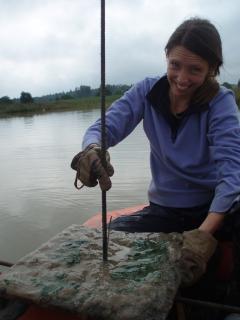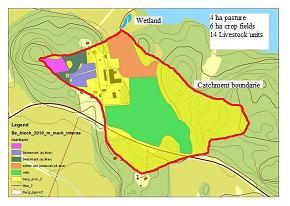
Methods
Seven constructed wetlands, small in relation to their catchments, with variable amount of clay in topsoil were chosen for the study. As a first step catchment boundaries were determined. Catchment characteristics that might affect phosphorus load and retention were quantified through field surveys, from data bases and land owners. They included:
Hydraulic load ( m d-1 )
Average catchment slope (%)
Clay content in topsoil (%)
proportion of crops in catchment (%)
Livestock Units (LU) per hectare
Houses with rural sewage discharge
Theoretical phosphorus load (kg ha-1 yr-1)
Length:width ratio

In the summer of 2009 sedimentation plates made of 40*40*0.9 cm plastic-coated plywood were placed in transects from inlet to outlet of each wetland. After approximately one year the plates were removed and the material accumulated upon them saved for phosphorus analysis according to Andersen (1975). Net sedimentation (kg m-2 yr-1), phophorus concentration (mg kg-1) and phosphorus amount (g m-2 yr-1) wasmeasured .

Responsible for this page:
Director of undergraduate studies Biology
Last updated:
05/08/11
